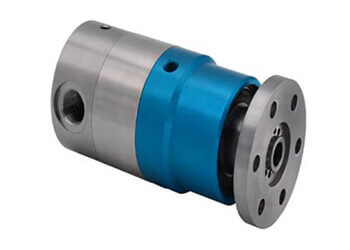In this article, we delve into the essential aspects of slip ring terminals, covering their structure, types, applications, installation, maintenance, troubleshooting, and future trends. Gain a deeper understanding of slip ring terminals and how to maximize their efficiency and longevity by addressing the most common concerns.
Introduction to Slip Ring Terminal
Slip ring terminals, also known as rotary electrical interfaces, rotating electrical connectors, collectors, swivels, or electrical rotary joints, have been a key component in various machine mechanisms that involve continuous rotational movement. This uninterrupted movement allows the transmission of power and electrical signals from a stationary to a rotating structure. An integral and pivotal part of slip ring motors, slip ring terminals bring to life the indispensable functionality of these motors.
Slip ring motors are widely used in myriad applications such as hoists, elevators, cranes, cable reeling drums, and many other machines needing the conversion of electrical energy to mechanical energy. For these applications to function smoothly, they inevitably rest on the enabling support of slip ring terminals.
Without slip ring terminals, the motors would be unable to maintain a constant electrical connection during the rotary motion, which would prevent the transmission of power to the sections of machinery that require movement. This could lead to disruptions, inaccurate readings, inconsistent operations, or even total machinery dysfunction.
It’s like the human body without joints; the structure may exist, but the purpose is lost without the seamless motion that joints offer. Hence, understanding the essence of slip ring terminals is not only essential but crucial for anyone exploring or working with slip ring motors.
The variety in designs of slip ring terminals propels the diversity in applications. By conforming to the specific needs of different industries and applications, they contribute to shaping the efficacy of these setups. From the simplest of motors to the most complex of machinery units, slip ring terminals bear the fundamental core around which these systems operate.
In light of their profound significance, this article will guide you through the nuances of slip ring terminals, starting from their basic structure and functionality, extending to their diverse types and specific applications, installation and maintenance essentials, troubleshooting common issues, and upcoming advancements, equipping you with a comprehensive knowledge of these vital components. Such understanding aids not only in the effective use but also in drawing maximum efficiency and lifespan from your slip ring motor system. Bail us as we commence this exploration journey of slip ring terminals.
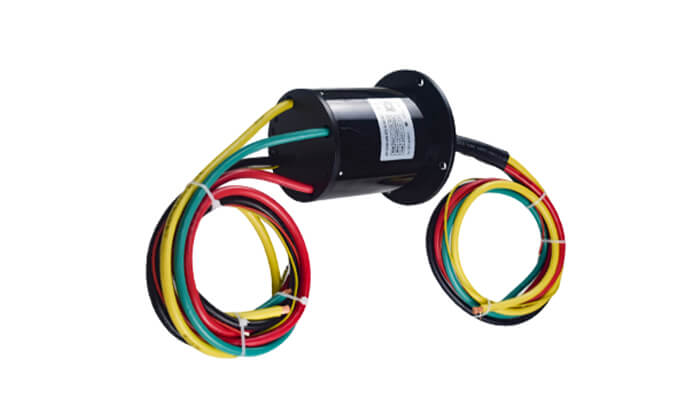
Slip Ring Terminal Structure and Function
Stepping into the intricate world of slip ring terminals, it’s crucial to first understand their basic structure and function. The marvel of these devices lies in their simplicity coupled with their indispensable role in power and signal transmission.
Each slip ring terminal, fundamentally, includes two key components: the slip ring and the brushes. Both these elements work harmoniously to sustain electrical continuity, thereby enabling the continuous functional operation of machinery.
The slip ring, as the name suggests, is a ring-shaped component made of highly conductive metal. This ring is typically mounted onto a rotating shaft. When the motor rotates, the slip ring does so as well, carrying the electrical signal or power along with it.
Adjacent to the slip ring are the brushes, which despite their name, are not bristles as we correlated with the common word brush. Instead, these are strips of soft conductive material, often made of graphite, copper, or precious metals. The brushes are maintained stationary and kept in constant contact with the slip ring. This purposeful contact ensures that the electrical connection isn’t broken even while the motor and slip ring are in motion.
As the slip ring rotates, the brushes, with their inherent spring-like tension, maintain a seamless and unbroken contact. This ensures that the electrical current or signal is constantly transmitted from a stationary source (the brushes) to the rotating part of the motors, (via the slip ring).
The constant contact of the brushes with the slip ring, and the simultaneous rotation of the slip ring, creates a continuous electrical pathway. This maintains electrical continuity even though a part of the system is in constant motion. This feature – the ability to transfer power or signals between stationary and rotating parts, in a sense, embodies the true essence of the slip ring terminal.
The significance of the slip ring terminal, therefore, is massive – It acts as the crucial link that enables the transfer of power or signals. In its absence, there would be breaks in power or signal transmission every time the motor is in motion, leading to discontinuity and reduced efficiency of the operating system.
This ingenious, yet simple, structural design allows slip ring terminals to perform their vital function, rendering them indispensable to various applications and industries. Enhancing our understanding of their structure and function aids in troubleshooting, maintenance, and even potential improvements, all instrumental in harnessing the full potential of slip ring terminals.
Types of Slip Ring Terminals
The world of slip ring terminals is diverse, offering a variety of types, each designed meticulously to meet specific needs and applications. This variety is not only observed in physical forms like cap-type, through-bore, or pancake but also extends to materials used for construction, each offering a unique flavor to the table.
Cap-Type Slip Ring Terminals
Cap-type slip ring terminals are miniature, and known for their compactness. While they may appear small, the capabilities they pack are by no means minimal. Due to their smaller and streamlined structure, they fit comfortably in restricted areas, making them especially suited for smaller machinery or equipment where space is limited. However, they are typically used for lower current applications due to their physical limitations.
Through-Bore Slip Ring Terminals
Contrary to the cap type, we have through-bore slip ring terminals. Their unique design includes a central hole, or ‘bore’, to accommodate a central pass-through. This lends a significant advantage for cable management, espousing cleaner, organized setups without any hindrance to the motor’s performance. It also allows increased flexibility for integration into larger systems. Due to their size and structure, they can handle a wider variety of tasks and are well-suited to more extensive applications.
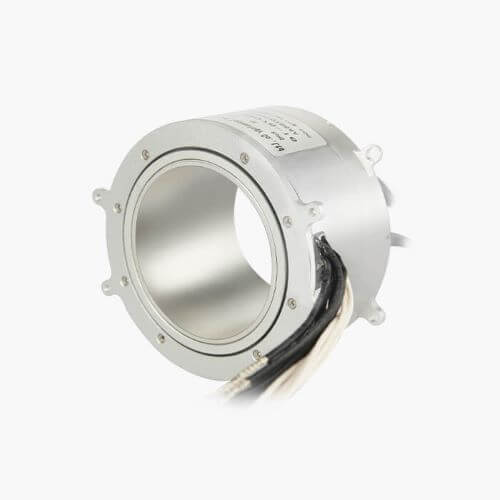
Pancake Slip Ring Terminals
The pancake slip ring terminals, named for their disc-like, flat structure, ensure a large point of contact between the brushes and slip rings. More contact area implies more space for electrical signal or power transmission. This makes pancake slip ring terminals an excellent choice for systems requiring assets with increased current-carrying capacity or while dealing with high-frequency signals.
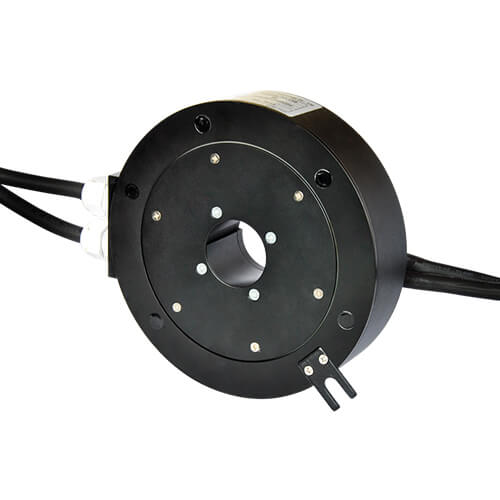
Besides these structural variations, the makeup of slip ring terminals – in other words, the selection of materials – radically impacts their performance, longevity, and suitability for specific tasks. The actual slip rings and brushes can be made from a variety of materials, each providing unique properties.
The material choice for brushes might range from graphite to precious metals like gold or silver. Graphite brushes, for instance, are common due to their good conductivity and low price point, but they tend to wear quickly and require regular replacements. Precious metals, on the other hand, demonstrate superior resistance to wear and oxidation, and hence are often used in demanding or critical applications where durability and longevity are of utmost importance.
Similarly, the slip rings could also be made from various materials – copper is commonly used for its excellent electrical conductivity, while metals like silver or gold may be used for their enhanced wear resistance, although the latter two carry higher costs.
Understanding these nuances in slip ring terminal variations helps one to make informed selection decisions based on specific needs and applications. This would be largely pivotal in obtaining optimal performance and durability from the slip ring terminal integrated system.
Slip Ring Terminal Applications
In the versatile realm of applications, slip ring terminals have carved a unique niche for themselves, being irrefutable components in an array of industries. The adaptability of slip rings, coupled with their ability to maintain electrical continuity in dynamic systems, makes them invaluable in multiple sectors. Two such prominent industries where they boldly proclaim their importance are the Wind Energy and Marine industries.
Wind Energy Industry
In the field of wind energy, the sustainability and efficiency of wind turbines heavily lean on the shoulders of slip ring terminals. Their competency in transmitting electrical power and various control signals from the nacelle – the housing at the top of a wind turbine that contains the generator and other equipment – to the blades’ rotating hub is simply irreplaceable and crucial.

As the wind propels the turbine blades into motion, the rotor hub also rotates. This rotation needs to be in synchronous harmony with the transmission of power and control signals generated from the generator housed at the stationary nacelle. Weaving this connection is the slip ring terminal, performing a complex task while enduring the wind’s whims and the hardship of harsh weather conditions. It is truly a silent hero making wind energy a prudent reality.
Marine Industry
In the marine industry, slip ring terminals prove their mettle in sophisticated applications like ship cranes, Remotely Operated Vehicles (ROVs), radar antenna, and more. These applications need to withstand the challenges of the aggressive marine atmosphere while ensuring smooth operations.
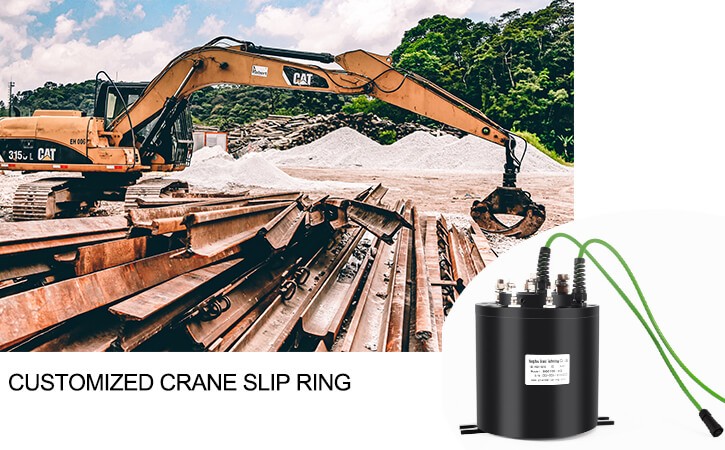
Take the case of ship cranes, critical for lifting heavy loads on and off the ship. The crane needs to swivel according to the load’s position which inevitably means continuous motion. This motion performed by the crane needs to synchronize with the transfer of power or signals required for the crane’s operation. The link serving these two functions is the slip ring terminal, ensuring the crane functions smoothly and efficiently.
Similarly, in ROVs – unmanned submarines used for offshore drilling support or scientific research – slip ring terminals play an essential role. They transmit power and data from the stationary control unit to the moving ROV, ensuring smooth and continuous operations even under severe underwater conditions.
In conclusion, one must appreciate the sheer versatility and crucial role these slip ring terminals play in diverse industries. Be it the high altitudes confronted by the wind energy sector or the challenging depths faced by marine applications, slip ring terminals consistently ensure power and data transmission continuity, affirming their indomitable importance.
Slip Ring Terminal Installation and Maintenance
Like any important machinery component, the effectiveness of slip ring terminals is significantly influenced not just by their inherent design and material properties, but also by how they are installed and maintained. Here are some practical guidelines for installation and maintenance to ensure optimum performance and enhanced lifespan of these crucial transfer bridges.
Installation of Slip Ring Terminals
- Choose the Right Terminal for the Task: Not all slip ring terminals are suitable for all applications. Be sure to choose the type that best fits the power or signal transmission necessary for your machinery. Take into consideration the available space, the required power or signal profile, and any specific environmental factors e.g., exposure to water, high temperatures, or corrosive substances.
- Ensure Clean and Solid Connections: The actual point of contact between the brushes and the slip ring is vital for efficient and uninterrupted transmission of power or signals. It should be free from dust, corrosion, oil, or other contaminants that might interfere with the connectivity.
- Secure Mounting: The slip ring should be securely mounted to the rotating component in your system, ensuring it consistently maintains the rotational speed and does not wobble or vibrate excessively which can lead to wear and tear.
Maintenance of Slip Ring Terminals
- Regular Inspections: Regular inspections of the slip ring terminal can help detect any early signs of wear and tear, corrosion, or other potential failures. This can prevent unexpected downtime and potentially costly repairs.
- Cleanliness is Key: Over time, dust and dirt can accumulate on the slip ring and brushes, reducing their conductivity and efficiency. Regular cleaning of the slip ring surface and the brushes can ensure optimal electrical contact and longer service life.
- Timely Brush Replacement: The brushes are usually the first component to wear out in a slip ring terminal. Regular inspection and replacement of brushes are vital to maintain the efficiency of the junction.
- Lubricate if Required: Some slip ring terminals may require lubrication to reduce friction and thereby, wear and tear. Always use approved lubricants as per manufacturer recommendations, and never over-lubricate as it can attract dust and compromise the electrical connection.
In the world of slip ring terminals, ‘prevention is better than cure’ rings true more than ever. By adopting these sensible installation and maintenance practices, not only will you ensure your system stays up and running smoothly, but you will invariably extend the lifespan and efficiency of your slip ring terminals.
Slip Ring Terminal Troubleshooting Common Issues
With prolonged usage, the possibility of stumbling upon problems related to slip ring terminals is highly possible. Identifying these common issues at the earliest and rectifying them is key to ensuring uninterrupted operations and longevity. Here we delve into some of such prevalent problems and offer solutions to tackle them efficiently.
Damaged or Worn-out Brushes
One of the most common issues associated with slip ring terminals is the wearing out of the brushes. Over time, due to the constant contact and friction, brushes may wear down, thus reducing their efficiency in maintaining electrical contact with the slip ring.
Solution: Regular inspection is crucial, especially in applications where the slip ring terminal is in continuous use. Detecting brush wear at an early stage can prevent further damage to the slip ring itself. Once identified, worn brushes must be replaced promptly with compatible ones that align with the slip ring terminal’s specifications.
Inadequate Contact
Inadequate or weak contact between the brushes and slip rings can lead to inefficient power or signal transmission. This issue could arise from several factors: brushes might not be pressed against the slip ring with enough force; the surface of either might be dirty, oxidized, or corroded; there can be misalignment in the assembly; or the brushes might have worn out or become damaged.
Solution: Regular cleaning of both the brushes and slip rings is necessary to ensure dust, dirt, or oxidation doesn’t disrupt the signal path. If the spring force holding the brushes against the slip ring is found to be inadequate, it may need adjustment or replacement. In case of alignment issues, a thorough check and readjustment of the assembly should resolve the problem.
Improper Installation
Incorrect or insecure installation can lead to various long-term issues, including damage to the slip ring terminal, excessive vibration, and loss of functionality.
Solution: It is recommended to follow the manufacturer’s instructions meticulously while installing slip ring terminals to avoid such issues. If doubts persist, seeking professional help can ensure a flawless installation process.
It is imperative to remember that foreseeing and adequately addressing these issues not only ensures the smooth functioning of the slip ring terminal but also greatly extends its service life. By keenly observing, understanding, and effectively troubleshooting these issues, you can keep your rotating machinery components spinning seamlessly for prolonged periods.
Slip Ring Terminal Latest Developments and Future Trends
As modern technology evolves, so too does slip ring terminal technology to keep pace with the ever-growing demands across diverse industries. Let’s discuss some of the latest developments and future trends in slip ring terminal technologies that offer enhanced capabilities, along with what these innovations mean for users.
Advancements in materials
One predominant avenue of development in slip ring terminal technology is the search for alternative materials. Researchers are continually seeking new materials for the brushes and slip rings themselves that can provide excellent conductivity, low friction, oxidation resistance, and durability.
For instance, advanced alloys and precious metals are gaining attention for offering improved wear resistance and oxidation resistance, leading to extended service life and lower maintenance needs. These material advancements will enable slip ring terminals to handle higher loads and harsher conditions, translating to improved performance and reliability for users.
Enhanced Designs
As the need for higher speeds, power profiles, and data rates increases, so does the requirement for sophisticated slip ring terminal designs. Innovations in rotor design and engineering, such as fiber brushes, liquid metal, and ringless slip ring solutions, are paving the path for increased transmission efficiency.
These designs allow for higher rotational speeds, lower electrical noise, minimized vibration impacts, and longer component lifespans. As a result, users can expect better slip ring terminal performance even under demanding circumstances, without compromising their system uptime and efficiency.
Integration of Advanced Technologies
Another promising trend is the integration of advanced technologies, such as sensors, fiber optics, and wireless capabilities, within slip ring terminals. These technological advancements enable better signal quality, real-time monitoring, increased data rates, and reduced signal losses.
Simultaneously, they also help manufacturers produce miniaturized slip ring terminals for space-critical applications. They can satisfy users’ multiple power, signal, and data transmission requirements in a unified compact package without the need for separate components.
Customizability
As industries continue to grow, so does the need for specialized slip ring terminal solutions. Manufacturers are shifting towards providing customized options to meet the diverse requirements of different industries. This trend gives users the ability to tailor slip ring terminals to accommodate their specific set of needs, ensuring optimal performance while minimizing system inefficiencies, downtime, and costs.
In conclusion, the latest developments and future trends in slip ring terminal technology promise to propel users toward new horizons of performance, reliability, and efficiency. As these innovative technologies continue to advance, they will not only meet the existing demands of various industries but also pave the way for new applications and achievements.
Conclusion
Understanding the structure, types, applications, installation, and maintenance of slip ring terminals is crucial for harnessing their full potential and ensuring efficient operation. As technology continues to evolve, we can expect further developments that enhance the performance and longevity of these critical components, benefiting the industries they serve.
See What We Can Do

